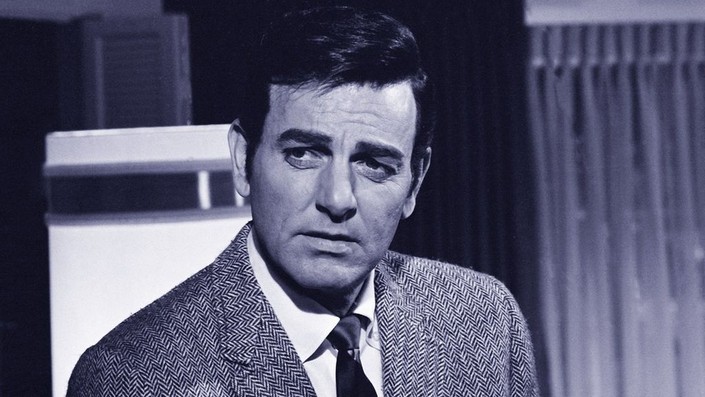The classic TV series Mannix has captivated audiences for decades with its thrilling plots and complex characters. One episode that stands out is “To the Swiftest, Death” from Season 2, Episode 4. This article delves into what happened in this episode, provides the latest updates, and explores its lasting impact on fans and the genre.
Introduction to “To the Swiftest, Death”

The Premise of Mannix
Mannix is a classic American detective series that aired from 1967 to 1975. The show follows private investigator Joe Mannix, played by Mike Connors, as he tackles various challenging cases. Known for its action-packed scenes and intricate plots, Mannix remains a beloved series in the detective genre.
Overview of the Episode
In “To the Swiftest, Death”, Joe Mannix takes up amateur auto racing as a hobby. During a race, fellow racer Tom West’s car goes over an embankment and explodes, resulting in his death. The episode is filled with suspense, intrigue, and a complex investigation that keeps viewers on the edge of their seats.
What Happened: The Plot Unfolded

The Tragic Racing Incident
The episode begins with Mannix participating in an amateur auto race. Tragedy strikes when Tom West, another racer, loses control of his car, which subsequently crashes and explodes. This dramatic scene sets the stage for the mystery that follows.
The Investigation Begins
Tom West’s widow, Ellen, played by Jill Ireland, believes her husband’s death was not an accident but murder. She hires Mannix to investigate the circumstances surrounding the crash. As Mannix delves deeper into the case, he discovers that federal authorities are also interested in the incident, hinting at a larger conspiracy.
Key Characters and Performances
The episode features a stellar supporting cast, including:
- Nicholas Colasanto as Mac Wagner
- Peter Haskell as Hal Murdock
- Hugh Beaumont as Frank Abbott, another investigator working on the case
- Jed Allan in a guest role
These characters contribute to the complexity and depth of the episode, each adding their own layer to the unfolding mystery.
Latest Update: Behind the Scenes and Legacy

Directing and Writing
“To the Swiftest, Death” was directed by Sutton Roley and written by John Meredyth Lucas. Their collaboration resulted in a gripping and memorable episode that remains a fan favorite. The direction and writing effectively blend suspense, action, and drama, making it a standout in the series.
Iconic Scenes and Opening Credits
Several scenes from this episode, including the fiery car crash, were used in the opening credits of the Mannix series. These iconic moments have become synonymous with the show’s intense and thrilling nature.
The Memorable Twist
The episode is known for its memorable twist ending, which reveals that Tom West was involved in top-secret government work, leading to his demise. This revelation adds a layer of complexity to the story and leaves viewers with much to ponder.
The Viral Video: Impact and Ethical Considerations
The Viral Nature of Classic TV Moments
The “To the Swiftest, Death” episode has gained renewed interest in the digital age. Classic TV moments often go viral on social media platforms, allowing new generations to discover and appreciate them. This episode’s dramatic scenes and compelling storyline have made it a topic of discussion among fans and critics alike.
Ethical Considerations
While the viral nature of such content helps preserve and celebrate classic TV, it also raises questions about the ethical implications of sharing dramatic and intense scenes. It’s important to approach these moments with respect for their historical and cultural significance.
The Broader Implications on TV and Pop Culture
Influence on Detective Genre
Mannix and episodes like “To the Swiftest, Death” have had a lasting impact on the detective genre. The show’s blend of action, mystery, and character development set a standard for future detective series. The episode’s intricate plot and dramatic twists continue to influence writers and directors in the genre.
Public Interest vs. Personal Privacy
The balance between public interest and personal privacy is a recurring theme in detective series. “To the Swiftest, Death” explores this tension through its plot, reflecting broader societal concerns about privacy and the public’s right to know.
Protecting Classic TV Legacy in the Digital Age
Preserving Quality and Integrity
As classic TV shows like Mannix are rediscovered by new audiences, it’s crucial to preserve their quality and integrity. Digital remastering and respectful sharing practices can help maintain the show’s original impact while adapting to modern viewing habits.
Legal Protections
Legal protections play a vital role in safeguarding the legacy of classic TV. Ensuring that rights holders are respected and that content is shared ethically can help preserve the cultural significance of shows like Mannix.
Conclusion: Reflecting on “To the Swiftest, Death”
“To the Swiftest, Death” is more than just a memorable episode of Mannix; it’s a significant piece of television history. As we reflect on this episode, it’s crucial to consider its impact on the detective genre, its ethical implications, and its place in the broader cultural landscape.
Final Thoughts
The enduring popularity of “To the Swiftest, Death” serves as a testament to the power of well-crafted television. Its complex characters, thrilling plot, and dramatic twists continue to captivate audiences, proving that great storytelling transcends time.
A Call to Action
Let us celebrate and preserve the legacy of classic TV shows like Mannix. By fostering a culture of respect and ethical sharing, we can ensure that these cultural treasures continue to inspire and entertain future generations. Together, we can work towards a digital landscape that honors the past while embracing the future.
Embracing the Legacy
Ultimately, the legacy of “To the Swiftest, Death” reminds us of the importance of preserving and celebrating classic television. By reflecting on our values and the choices we make in sharing and consuming media, we can contribute to a culture that respects and honors the timeless impact of great storytelling.
